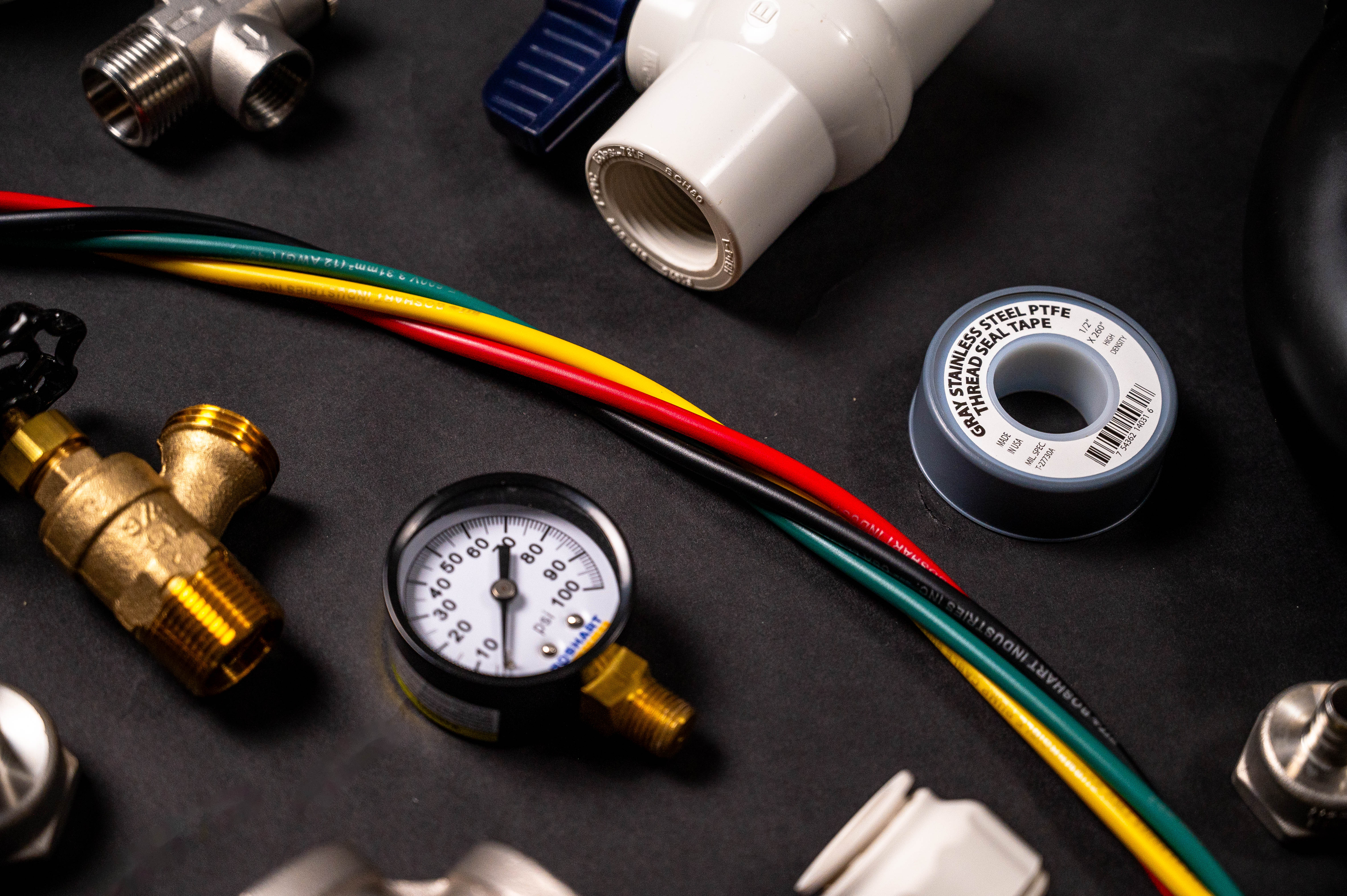Getting pumped about pump cable is not an easy task. Fortunately, we are up for the test. The goal by the end of this blog is to give you the confidence to face pump cable head on and leave you with a clearer understanding. We will do this by educating and providing you with all the tools necessary to understand terms and differences found in the pump cable world. Let's dive in, shall we?
Are Cable and Wire the same thing?
A good starting point is to understand the terms cable and wire. Did you know that cable and wire are actually different? Don't feel bad if you didn't know, cable and wire are often confused. The term cable is referred to two or more wires wrapped together where the term wire refers to a single conductor.
Multiple wires make up a cable, they can be twisted or laid flat (see picture) and are wrapped by another layer of insulation. Flat Jacket pump cable is less likely to get damaged during installation and is UV resistant. Now you know!
Stranded vs Solid-Core Wire
Stranded Wire
Stranded wire is made up of a bundle of smaller gauge wires that are compressed and insulated with a %20stranded.png?width=300&name=TWUF%20(7)%20stranded.png) material that is not able to conduct heat or electricity. You will normally find stranded wire in settings where the wire could experience frequent flexing.
material that is not able to conduct heat or electricity. You will normally find stranded wire in settings where the wire could experience frequent flexing.
Being extremely flexible makes it easier to route and it greatly reduces the risk of a conductor breaking resulting in very costly repairs. Stranded wire is typically found being used for automotive wiring.
Solid Wire
%20solid.jpg?width=350&name=TWUF%20(1)%20solid.jpg) Similar to stranded wire, solid wire is insulated with a non-conductive material but it only consists of a single strand or core of wire. Solid wire is not designed to be frequently flexed. Solid wire is cheaper to produce compared to it's stranded counterpart and is easier to make connections.
Similar to stranded wire, solid wire is insulated with a non-conductive material but it only consists of a single strand or core of wire. Solid wire is not designed to be frequently flexed. Solid wire is cheaper to produce compared to it's stranded counterpart and is easier to make connections.
Solid wire is typically only available in small gauges and repeated vibration or flexing could cause the wire to break. You would generally find solid wire being used for a houses electrical wiring.
What is AWG?
AWG stands for American Wire Gauge. This is a standard method that stands for wire diameter. It is the measure of the diameter of the conductor with the insulation removed. You could also see AWG being referred to as Brown and Sharpe (B&S) wire gauge.
An important note, the higher the number, the thinner the wire. To put this into perspective, typical household wiring has an AWG number of 12 or 14, where telephone wire generally has an AWG of 22 or 24. Thicker wire is normally used for long distances as it has less electrical resistance over any length.
Cable Confusion
In the industry, there are different ways of referring to pump cable which can cause confusion. Sometimes it is described by the type of motor installed on the submersible pump or some people refer to the actual number of wires the pump cable has.
For example. If a pump cable has 4 wires; yellow, black, red and green (which is the ground), some people call that 4 wire. But in some cases, this is considered 3 wire as they don't count the green ground wire because it is not considered a power conductor. This is where people tend to get confused and this could cause incorrect purchasing.
You can still purchase cable without the green ground wire but this is not the safest option as in some cases the installers could fail to put in the ground wire leaving a severe shock hazard.
What the heck is Tracer Wire?
Tracer wire is designed to help locate energized or non active wires, cables and pipes whether underground or hidden behind a wall. Locating and identifying these lines is a very important step to do before construction to ensure safety for everyone involved. This also reduces the potential for costly mistakes.Tracer wire is inexpensive and could potentially save you money down the road if something is to ever get damaged due to not being able to find it.
Well, are you pumped about pump cable? By breaking information down and streamlining it, pump cable becomes quite easy to understand. We hope that your confidence towards pump cable has been restored and you feel comfortable making the right choice the next time you need to order pump cable. And share this information with a stranger, you could help them get pumped about pump cable too.
Have further questions about this subject?

Head over to Boshart's Knowledge Base: technical product information, guidelines, and more.



.png)


SHARE